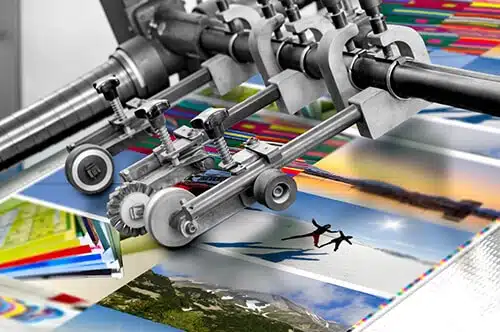Books have been a fundamental part of human culture for centuries. They provide us with knowledge, entertainment, and a way to escape from reality. However, creating a book is a complex process that involves different steps and methods. One of the most crucial steps is the printing method used to produce the final product. In this article, we will provide you with a comprehensive guide to book printing methods, including offset printing, digital printing, and print-on-demand (POD) printing.
Offset Printing
Offset printing is a traditional printing method that has been used for decades. It involves transferring ink from a printing plate to a rubber blanket and then to the printing surface. Offset printing is suitable for high-volume printing, such as book printing, as it allows for consistent and high-quality results. This method is commonly used for printing hardcover books, trade paperbacks, and textbooks.
Offset printing provides a wide range of paper options and finishes, such as matte, gloss, and satin. This allows for a high level of customization in terms of the final look and feel of the book. Additionally, offset printing is cost-effective for large print runs, making it a popular choice for publishers and authors.
Digital Printing
Digital printing is a more modern printing method that uses digital files to print directly onto the paper. This method is suitable for short-run printing, such as printing a limited edition or a small number of copies for personal use. Digital printing provides a high level of detail and color accuracy, making it an excellent choice for printing books with colorful illustrations or photographs.
Digital printing is cost-effective for small print runs as it doesn’t require the setup and maintenance costs associated with offset printing. Additionally, digital printing allows for quick turnaround times, making it a popular choice for printing books on demand.
Print-on-Demand (POD)
Print-on-demand (POD) is a relatively new printing method that has revolutionized the book printing industry. It involves printing books only when they are ordered, eliminating the need for large print runs and excess inventory. POD printing uses digital printing technology, which allows for high-quality prints and fast turnaround times.
POD printing is cost-effective for self-publishers and independent authors as it eliminates the need for large upfront costs associated with offset printing. Additionally, POD printing allows for greater flexibility in terms of book customization, such as personalized covers and interior designs.
Conclusion
Choosing the right book printing method depends on the specific needs of the author or publisher. Offset printing is ideal for large print runs, digital printing is suitable for short-run printing, and POD printing is cost-effective and flexible for self-publishers and independent authors. By understanding the different printing methods available, authors and publishers can make informed decisions about how to produce their books and bring their stories to life.





